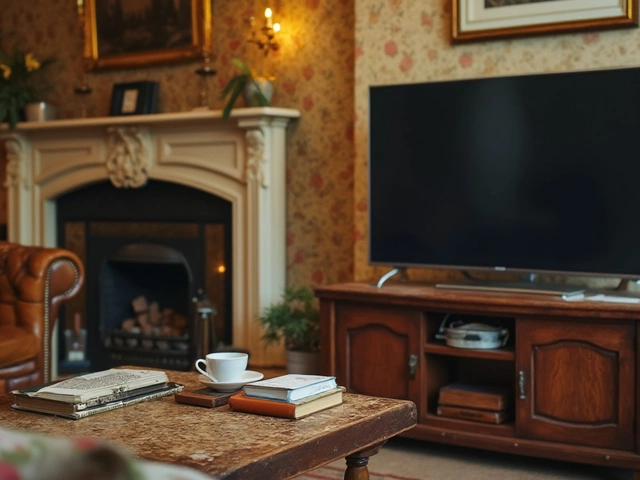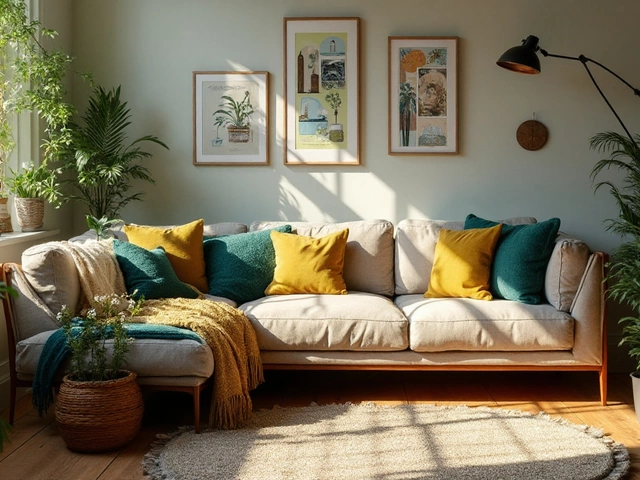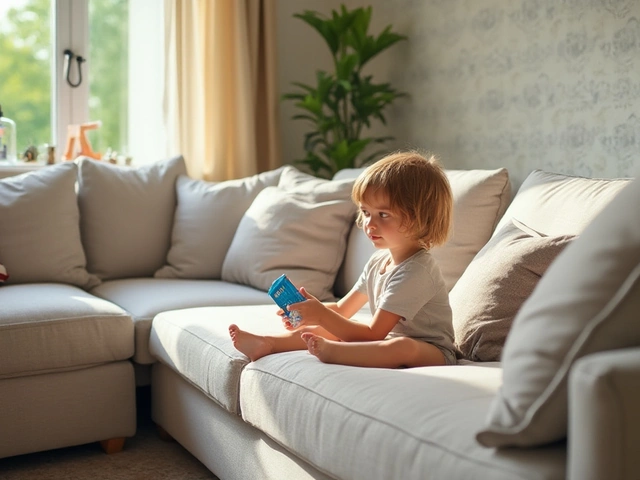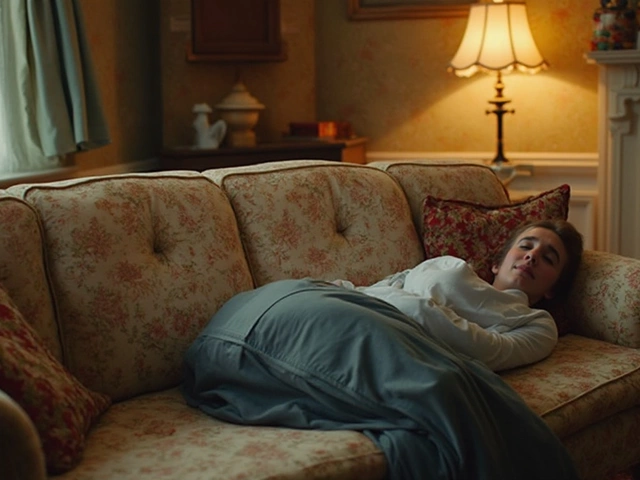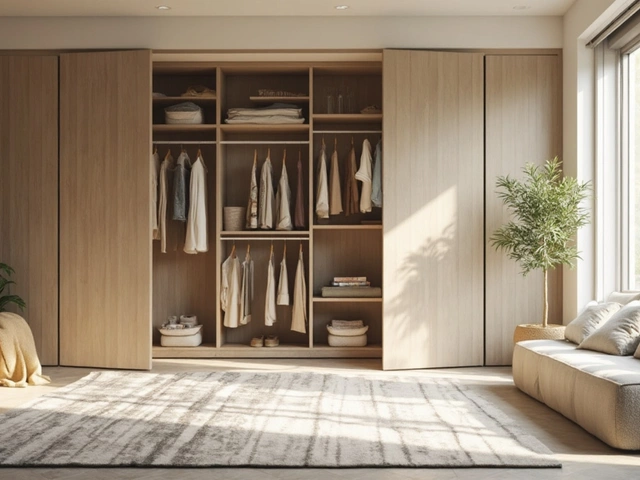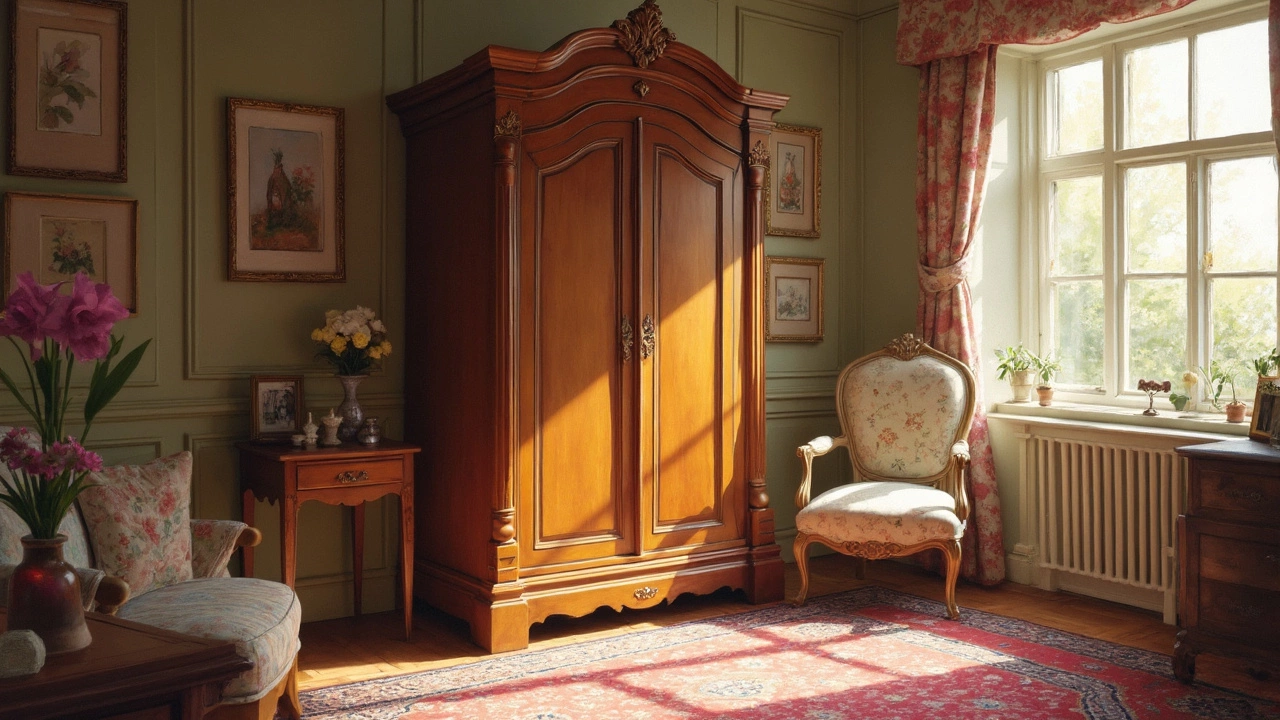 15
Feb,2025
15
Feb,2025
Ever wondered why your British friend keeps referring to their wardrobe instead of a closet? It's not just a matter of British politeness or tradition—it actually means something quite different over there. In the UK, a 'wardrobe' is typically a large, freestanding piece of furniture used to store clothes, much like what Americans would call a 'clothes closet.' But don't picture a cramped, built-in wardrobe space. These charming structures can be quite the staple in British bedrooms.
Here's the fun part: the word 'closet' doesn't translate the same way across the pond. When Brits use 'wardrobe,' they're not simply aiming for a touch of class. In the US, 'closet' generally refers to both built-in and freestanding spaces for storing clothes and other items. Across the Atlantic, built-in ones are more likely to be referred to as cupboards or built-in wardrobes, while closets, well, are mostly in Hermione Granger's world of fiction.
- British Wardrobe Basics
- The Wardrobe vs. Closet Debate
- Designs and Materials
- Choosing the Best Wardrobe
British Wardrobe Basics
So, let’s talk about what makes a wardrobe in the UK the star of the bedroom. Traditionally, these pieces of furniture are freestanding and offer storage solutions that go beyond just hanging clothes. Imagine it like a personal clothes valet that stands proudly in the corner, inviting you to keep your outfits tidy.
British wardrobes come in all shapes and sizes, but most commonly, you'll find them made of wood, offering a classic and sturdy look that fits most British home aesthetics. You might think of oak, pine, or beech when considering the materials. These types of wood aren’t just a nod to tradition; they also ensure the durability we all pine for (pun intended!).
Functionality and Styles
Functionality is where the wardrobe really shines. Typically, these wardrobes aren't just a single open space; they often come with a combination of full-length hanging areas, drawers, and sometimes shelves. This versatility makes them ideal for organizing both formal wear and casual attire.
When it comes to styles, you're looking at a mix of contemporary and vintage. Sleek modern designs with mirrored doors are quite popular, but there’s always a special place in British homes for Victorian or Edwardian-inspired wardrobes, which often feature intricate carvings or decorative handles.
Wardrobe Stats in the UK
Here’s a little statistical insight: A study in 2022 revealed that British people are increasingly leaning towards modular designs, allowing homeowners to customize the inside of their wardrobes. This trend reflects the growing need for personal space management, catering to varied lifestyles and storage needs.
| Type | Popularity (%) |
|---|---|
| Traditional Wooden Wardrobes | 45% |
| Modern Mirrored Wardrobes | 30% |
| Modular Wardrobes | 25% |
Whether you're going for a rich mahogany finish or a sleek white gloss, remember that a wardrobe is more than just storage. It’s a statement piece that adds character to your room while catering to your daily needs.
The Wardrobe vs. Closet Debate
So, what’s the real difference between what the Brits call a wardrobe and what Americans call a closet? It all boils down to the physical setup and cultural nuances. In the UK, a wardrobe is almost always a standalone furniture piece, often crafted from wood and offering a nostalgic charm. In contrast, across the pond, a closet is typically built into the wall and more like a no-fuss storage space.
For British homes, wardrobes are a design element all on their own. They add character to a room, and their movable nature means they can easily be rearranged or removed. This makes them super practical, especially if you love to shake up your interior design every now and then.
Why Do Americans Prefer Closets?
Americans lean towards closets mainly due to space-saving solutions that come with built-in designs. Floor space comes at a premium, especially in urban areas, and a built-in closet maximizes room usage. No need to account for another piece of furniture in the room—that's one less thing to move around when you're cleaning!
Wardrobe Styles in the UK
In British bedrooms, wardrobes come in many shapes and sizes. You’ve got your traditional two-door wardrobes, which are the most common, and the more spacious three-door versions. Some even have mirrored doors, doubling up as a vanity aid.
- Two-door wardrobes: The classic choice for most bedrooms.
- Three-door wardrobes: Offer more storage space with a bit of luxury.
- Mirrored wardrobes: Great for small rooms as they enhance space and lighting.
These are often crafted from materials like oak, pine, or even contemporary alternatives like plywood and MDF, making them suitable for various budgets and tastes. The right wardrobe isn’t just for style; it should also match your storage needs and complement your room's décor.
So, whether you're sticking with a trusty wardrobe or opting for a built-in closet, the choice often reflects the space availability and lifestyle preferences. And there you have it—the lowdown on the age-old wardrobe versus closet debate.
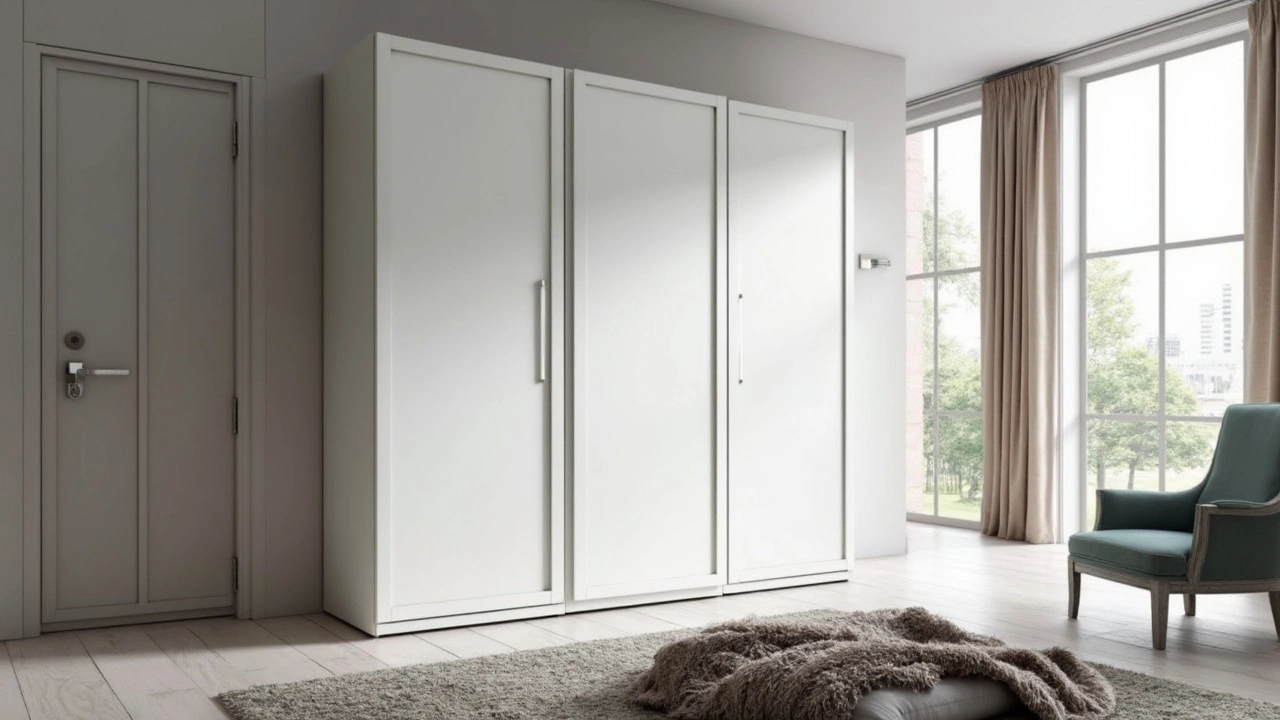
Designs and Materials
When it comes to wardrobes, Brits have a flair for combining history and style with functionality. You might find wardrobes sporting anything from a minimalist modern flair to a baroque antique finish, each with its own charm.
Popular Wardrobe Designs
Here’s a glance at what’s trending in British homes:
- Sliding Door Wardrobes: Perfect for small spaces. They save room by eliminating the need for door clearance.
- Freestanding Wardrobes: These are the most traditional. You can find these in a range of styles, from modern sleek designs to vintage wooden looks.
- Armoires: These are more than just wardrobes—think of them as a stylish statement piece with ornate designs, often used to give a room character.
Materials Matter
The materials used are just as diverse as the designs. Let's break it down:
- Wood: The classic choice, be it oak, walnut, or mahogany. It exudes a warm, traditional vibe and often lasts decades.
- Metal: Found in more industrial or contemporary settings, metal wardrobes are robust and offer a sleek appearance.
- Laminate and MDF: These give budget-friendly options that don’t compromise much on style or durability. They can mimic the appearance of more expensive materials.
Knowing your material is crucial. Wood might give a rich, timeless feel but can be heavier and harder to move. Whereas, metal wardrobes are lighter and offer a modern aesthetic but might lack the coziness wood provides.
So whether you're after a strong, rustic centerpiece or a sleek, modern touch, there's a unique wardrobe design to fit every taste and room size. Your choice will set the tone for the whole room, so make sure it aligns with your personal style and home ambiance.
Choosing the Best Wardrobe
Finding the perfect wardrobe for your space can be a bit tricky, but it's all about knowing what you need. Let's break it down into simple steps that will help you make the best choice without losing your mind.
Size Matters
Before you even think about style, measure your space. Trust me, it's vital. Nothing's worse than falling in love with a piece, only to discover it won't fit through your door. Use a tape measure to note the height, width, and depth of the area where you want the wardrobe to sit.
What’s Inside Counts
Think about what you'll store in your wardrobe. Are you a shoe hoarder or an accessory lover? More hanging space might be right if you own lots of dresses or suits, while shelves and drawers are perfect for organizing folded clothes and smaller items.
- Hanging Rails: More will suit if you have a closet full of coats or shirts.
- Shelves: Ideal for stacking jeans or jumpers.
- Drawers: Handy for socks, ties, and smaller bits.
Material and Style
The material of your British wardrobe not only impacts its look but also its durability. Solid wood like oak gives a classic touch and lasts long, but it can be on the pricier side. For a modern twist, consider composite materials that still offer a nice finish.
Storage Stats
On average, a freestanding wardrobe in the UK offers around 200-300 liters of storage space. Ensure the one you pick can handle your wardrobe needs.
Budgeting Wisely
Budgets are boring but necessary. A basic freestanding wardrobe starts around £100, but for those vintage or hand-carved looks, you might be eyeing £1000 or more. Find a balance that keeps both your room and your bank balance happy.
By considering these factors, you'll be well on your way to choosing a wardrobe that fits perfectly both in your space and with your lifestyle. Happy hunting!
